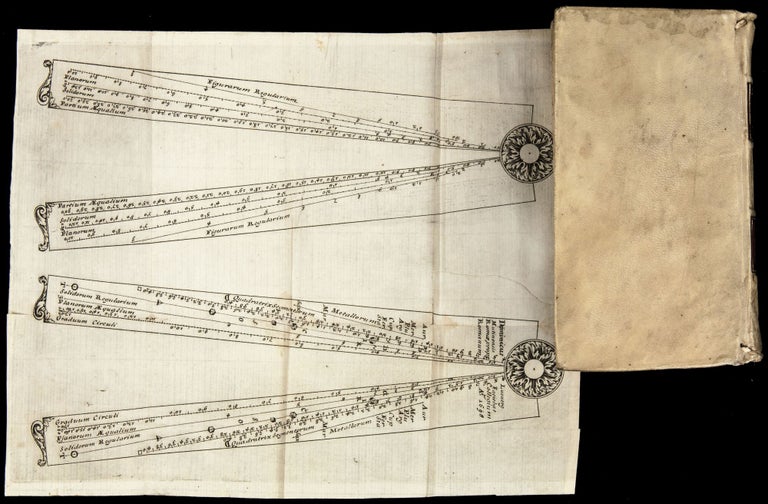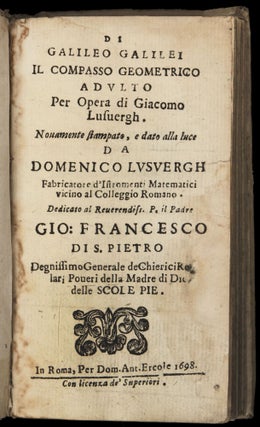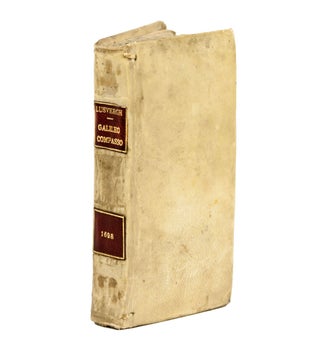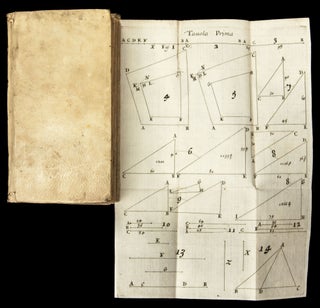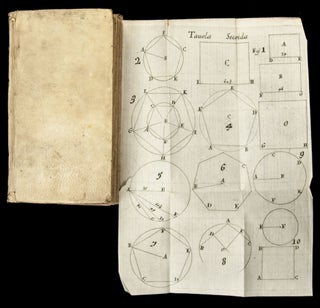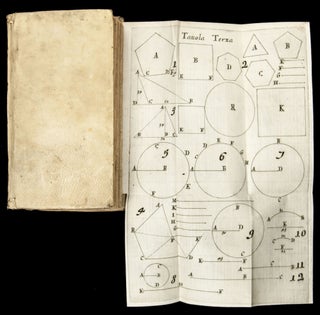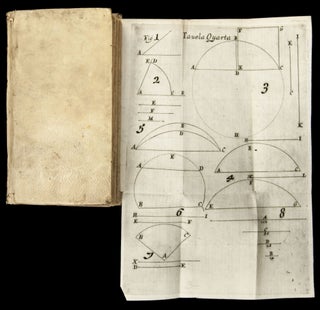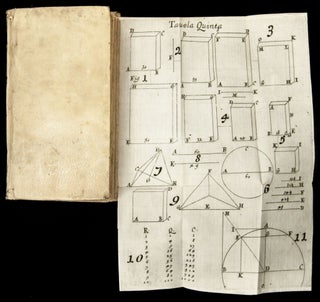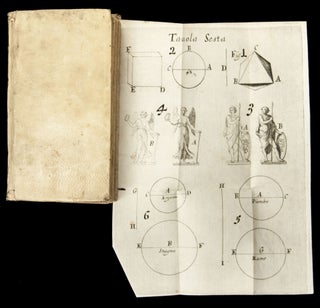Di Galileo Galilei Il compass geometrico adulto per opera di Giacomo Lusvergh.
12mo. [14.0 x 7.9 cm], 202 pp., xx pp., (1) f., with (1) large folding engraving of the instrument and 6 additional engraved plates. Bound in contemporary stiff vellum, later gold-tooled morocco labels laid to spine, blue mottled edges, booklabel of Erwin Tomash inside upper cover. Only minor rubbing and edge wear to spine and board, paper support at rear joint. Some dampstaining to tp and to a few scattered leaves, otherwise internally very well preserved. Rare first edition of this pocket ‘user’s guide’ to Galileo’s proportional compass, written by Domenico Lusvergh (1669-1744), nephew and protégé of Giacomo Lusvergh, the “outstanding maker of mathematical instruments” (S. Drake) during the second half of the 17th century. This manual was intended to accompany Domenico’s improved model of Galileo’s proportional compass, which was already nearly a century old at the time of the book’s publication. Like Galileo’s original guide, Le operazioni del compasso geometrico et militare (1606), Domenico Lusvergh’s manual provided instructions and applications for using his updated model, now redesigned with more calculating functions. Lusvergh’s streamlined version also increased the instrument’s portability so that it could be carried around in a pocket case of drawing instruments. The Lusvergh family arrived in Rome about 1668 and set up shop in the Piazza Collegio Romano, where they made and sold scientific and mathematical instruments, following a tradition of modern instrument making in Italy which began with Galileo in the north at the beginning of the century, but increasingly became centered in Rome, with the principal makers being Eustachio Divini, Giuseppe Campani, Adam Heroldt and slightly later Giacomo Lusvergh, all active from mid-century onwards. The Lusvergh family remained in business until the middle of the 19th century. * Carli-Favaro 393; Cinti 165; Sotheran, Second Supplement, 15759; Bofitto, Gli srtumenti della scienza, p. 84; A. Turner, Early Scientific Instruments, p. 154; M. Dumas, Scientific Instruments, p. 67; Stillman Drake, Operations of the Geometric and Military Compass 1606, p. 35.
The 17th century saw several alterations to Galileo’s instrument by such makers as Revesi Bruti, Casati, Pagnini, Henrion and Domenico Lusvergh, but none superseded Galileo’s basic design. More important than these alterations, however, was the proliferation of new applications for which the instrument could be used, an adaptation analogous to the way new ‘apps’ expand the capacities of the modern smartphone without altering the device’s basic structure.
Sold

